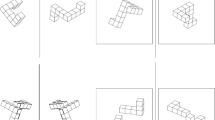Abstract
Although parrots share with corvids and primates many of the traits believed to be associated with advanced cognitive processing, knowledge of parrot cognition is still limited to a few species, none of which are Neotropical. Here we examine the ability of three Neotropical parrot species (Blue-Fronted Amazons, Hyacinth and Lear’s macaws) to spontaneously solve a novel physical problem: the string-pulling test. The ability to pull up a string to obtain out-of-reach food has been often considered a cognitively complex task, as it requires the use of a sequence of actions never previously assembled, along with the ability to continuously monitor string, food and certain body movements. We presented subjects with pulling tasks where we varied the spatial relationship between the strings, the presence of a reward and the physical contact between the string and reward to determine whether (1) string-pulling is goal-oriented in these parrots, (2) whether the string is recognized as a means to obtain the reward and (3) whether subjects can visually determine the continuity between the string and the reward, selecting only those strings for which no physical gaps between string and reward were present. Our results show that some individuals of all species were able to use the string as a means to reach a specific goal, in this case, the retrieval of the food treat. Also, subjects from both macaw species were able to visually determine the presence of physical continuity between the string and reward, making their choices consistently with the recognition that no gaps should be present between the string and the reward. Our findings highlight the potential of this taxonomic group for the understanding of the underpinnings of cognition in evolutionarily distant groups such as birds and primates.


Similar content being viewed by others
References
Borsari A, Ottoni EB (2005) Preliminary observations of tool use in captive Hyacinth Macaws (Anodorhynchus hyacinthinus). Anim Cogn 8:48–52
Chappell J, Kacelnik A (2002) Tool selectivity in a non-primate, the New Caledonian crow (Corvus moneduloides). Anim Cogn 5:71–78
Cummins-Sebree SE, Fragaszy DM (2005) Choosing and using tools: Capuchins (Cebus apella) use a different metric than tamarins (Sanguinus oedipus). J Comp Psychol 119:210–219
Dücker G, Rensch B (1977) The solution of patterned string problems by birds. Behaviour 62:164–173
Funk MS (2002) Problem solving skills in young yellow-crowned parakeets (Cyanoramphus auriceps). Anim Cogn 5:167–176
Halsey LG, Bezerra BM, Souto AS (2005) Can wild common marmosets (Callithrix jacchus) solve the parallel strings task? Anim Cogn 9:229–233
Heinrich B (1995) An experimental investigation of insight in Common Ravens (Corvus corax). Auk 112:994–1003
Heinrich B, Bugnyar T (2005) Testing problem solving in ravens: string-pulling to reach food. Ethology 111:962–976
Huber L, Gadjon GK (2006) Technical intelligence in animals: the kea model. Anim Cogn 9:295–305
Iwaniuk AN, Dean KM, Nelson DA (2005) Interspecific allometry of the brain and brain regions in parrots (Psittaciformes): comparisons with other birds and primates. Brain Behav Evol 65:40–59
Osthaus B, Lea SEG, Slater AM (2005) Dogs (Canis lupus familiaris) fail to show understanding of means-end connections in a string-pulling task. Anim Cogn 8:37–47
Ottoni EB, Izar P (2008) Capuchin monkey tool use: overview and implications. Evol Anthropol (in press)
Pepperberg IM (2004) “Insightful” string-pulling in Grey parrots (Psittacus erithacus) is affected by vocal competence. Anim Cogn 7:263–266
Povinelli DJ (2000) Folk Physics for Apes: Chimpanzees, tool-use and causal understanding. Oxford University Pres, Oxford
Santos LR, Miller CT, Hauser MD (2003) Representing tools: how two non-human primate species distinguish between the functionally relevant and irrelevant features of a tool. Anim Cogn 6:269–281
Schuck-Paim C, Alonso WJ, Ottoni EB (2008) Cognition in an ever-changing world: climatic variability is associated to brain size in Neotropical parrots. Brain Behav Evol (in press)
Seed AM, Tebbich S, Emery NJ, Clayton NS (2006) Investigating physical cognition in rooks, Corvus frugilegus. Curr Biol 16:697–701
Seibt U, Wickler W (2006) Individuality in problem solving: string pulling in two carduelis species (Aves: Passeriformes). Ethology 112:493–502
Tomasello M, Call J (1997) Primate cognition. Oxford University Press, Oxford
van Schaik CP, Fox EA, Sitompul AF (1996) Manufacture and use of tool in wild Sumatran orangutans: implications for human evolution. Naturwissenschaften 83:186–188
Visalberghi E, Limongelli L (1994) Lack of comprehension of cause–effect relations in tool-using capuchin monkeys (Cebus apella). J Comp Psychol 1:15–22
Visalberghi E, Tomasello M (1998) Primate causal understanding in the physical and psychological domains. Behav Proc 42:189–203
Visalberghi E, Trinca L (1989) Tool use in capuchin monkeys: distinguishing between performing and understanding. Primates 30:511–521
Weir A, Chappell J, Kacelnik A (2002) Shaping of hooks in New Caledonian crows. Science 297:981
Werdenich D, Huber L (2006) A case of quick problem solving in birds: string pulling in keas, Nestor notabilis. Anim Behav 71:855–863
Whiten A, Goodall J, McGrew WC, Nishida T, Reynolds V, Sugiyama Y, Tutin CEG, Wrangham R, Boesch C (1999) Cultures in chimpanzees. Nature 399:682–685
Acknowledgments
We are grateful to W. J. Alonso, A. Weir, D. Fragaszy and her students and the anonymous referees for helpful comments and suggestions on the manuscript. We would also like to thank Lymington Foundation for their constant support and enthusiasm and for offering us the facilities to observe the animals under their care. We also thank W. J. Alonso for the scientific illustration shown in Fig. 2. Financial support was received from CNPq (Conselho Nacional de Desenvolvimento Cientifico e Tecnologico) and FAPESP (Fundação de Amparo a Pesquisa do Estado de São Paulo). All experiments and procedures reported were conducted in full compliance with the current Brazilian laws.
Author information
Authors and Affiliations
Corresponding author
Rights and permissions
About this article
Cite this article
Schuck-Paim, C., Borsari, A. & Ottoni, E.B. Means to an end: Neotropical parrots manage to pull strings to meet their goals. Anim Cogn 12, 287–301 (2009). https://doi.org/10.1007/s10071-008-0190-z
Received:
Revised:
Accepted:
Published:
Issue Date:
DOI: https://doi.org/10.1007/s10071-008-0190-z




